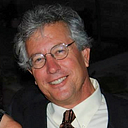What this APUSH Teacher Thinks about AP Classroom
Launched over a year ago, it’s bound to transform the American education landscape
Whenever I am asked about AP Classroom, my answer includes mention of the fact that I view AP Classroom as the equivalent of Henry Ford’s Model T.
The Model T, when first rolled off the assembly line, wasn’t perfect. It didn’t always start, it belched smoke now and then, and on occasion one of its tires would pop. It just wasn’t “user friendly”, yet with time the Model T transformed the American transportation landscape. The same will hold true for AP Classroom.
In other words, I predict that AP Classroom, though off to a somewhat rocky start, will with time transform the American education landscape, if only because AP Classroom is fundamentally designed to have more students than ever learn the needed content and skills in far less time than ever imagined AND because College Board, like the Ford Motor Company, has what it takes to turn this design into reality.
Sidenote #1:
Last year, I aligned my APUSH course 100% with the CED (Topics, Key Concepts, and Pacing Guide) found on AP Classroom. I also made great use of the AP Classroom Progress Check Questions and AP Classroom Question Bank. The result — more students than ever received a score of 3 or better.
Given last year’s “research findings,” I’m doing the same this year, but doubling down on my determination to fully allign, with all indications being (three months before the exam) that at least 85% of my 141 students will receive a score of 3 or better. If this prediction holds true, I will credit AP Classroom. The CED found there, along with the AP Daily videos, Progress Check Questions, and Question Bank Questions have taken all the mystery out of what’s on the test.
Sidenote #2
My decision to fully make use of all that is found on AP Classroom has left me with a considerable number of class periods to do with as I want. In other words, given my school’s academic calendar and all that AP Classroom has to offer, I haven’t needed nearly the number of school-allotted class periods to properly prepare my students for the May exam.
This has resulted in my being able to place before my students, long before the May exam, a number of project-based learning opportunities that not only engage the students infinitely better than the learning opportunities placed before the students in a typical AP US History course, but that also have resulted in my students producing the kind of work that is sure to open wide the eyes of the college and university admission officers everywhere. (To give you just a sampling of the eye-opening work that my students have produced, click here.)
Sidenote #3
My school’s administrators are so intrigued by what I’m claiming here that they are seriously considering the idea of giving me a chance to teach an AP Psychology course this summer.
True, they may ultimately decide to go another route— dual enrollment for example— and if they go this route, I certainly would support the call. Dual enrollment is good for kids.
However, if my school’s administrators do decide to give me a chance to teach an AP Psychology course this summer, this would mean having to get the students ready for the May 2022 exam within a six-week, M-F, 4 hours per day time period (and this at a school with high expectations.)
Nonetheless, I predict that if given a chance to go this route, though my students would not be taking the AP Psych Exam for nearly a year after completion of the course, an overwhelming majority of them will still earn a score of 3 or better, if only because of the power of AP Classroom and my plan to make ample use of all that is found there.
Though not yet user-friendly, and known for failing to start on occasion, AP Classroom, even in its infancy, is clearly destined for the history books.
